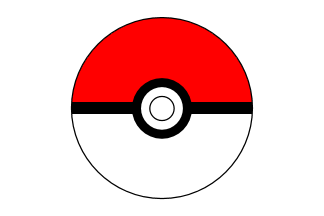
1.) Mario
One cannot talk about the history of video gaming as a whole without running smack into the Mario series, Nintendo's 30-year juggernaut that, in its time, saved Nintendo from bankruptcy, resurrected the North American Console Market, spawned literally hundreds of games, and been used as the cover label on almost every genre known to gaming, save fighting games and the First-Person shooter. It has outdone the next entry on this list (though mainly by its longevity, it seems) by over 2-to-1, and Mario himself is, perhaps, video gaming's most recognizable icon.
Like another franchise on this list, the Mario series was born of desperation. Following the dismal failure of Nintendo's arcade game Radar Scope, the president of the company asked Shigeru Miyamoto to design something to save their investment. Realizing that the game was too weak to be saved, he instead designed a new game that would run on the Radar Scope hardware, allowing his company to and arcade owners to convert the unsold cabinets into running the new game. He game up with the idea of a sort of obstacle-course game that involved a whole lot of running, jumping, climbing ladders, and so on, and in 1981, Donkey Kong was born, creating a franchise and eventually inviting a lawsuit from Universal Studios. The game was an immediate and huge success, becoming easily one of the best-selling arcade machines of the early 1980s, and it wasn't difficult to see why, as the game had gameplay far better-tuned and designed than many other contemporary machines. The game carried the first iteration of Mario, then called Jumpman, and so things began.
The character of Mario was supposedly named after Mario Segale, Nintendo of America's landlord in the early '80s. The arcade Mario Bros., which first introduced him as Mario as well as his brother, Luigi, became successful as well, despite the game being entirely sewer level, but Mario as a franchise did not fully take off until the release of Super Mario Bros., the pack-in game for the then-new Famicom/NES. Acclaim was immediate and universal, and, perhaps, with good reason, as Super Mario Bros. was one of the best games ever designed for the system- the controls for the game were unfailingly precise, exploration was rewarded, and through the player's toolset was limited, making the most of it was the key to success. The game was so well-loved that the Game Boy Advance re-release in 2004 sold almost 900,000 copies.
While the game started off as a series of platformers (including one game that was romhacked into being part of the franchise), the game grew to encompass many other genres and modes of play, starting, with Dr. Mario, but more famously, Mario Kart. while many franchises choose not to deviate from their original mode of play, the Mario label and characters have been used for all manner of games, such as all kinds of sports, puzzle games, racing games, third-person action games such as Luigi's Mansion, and a fairly well-loved line of RPGs that started with the first and only collaboration between Nintendo and Squaresoft, which took place during the era where it seemed that Squaresoft could do no wrong. This was especially notable because Nintendo very rarely allowed third-party developers to handle their most prized property.
Mario's breakthrough into 3D was no less successful than Mario's earlier offerings. Super Mario 64 was one of the launch titles for the unfortunately-delayed Nintendo 64 and served as the mold for all later 3D platformers on the system, such as the ones developed by Rare. SM64 placed an emphasis on exploring large areas with multiple objectives, and design decision which filtered down to games such as Banjo-Kazooie and its sequels. The game itself was no less lauded than its predecessors, and it remains one of the most well-loved Mario games, alongside its other notable cohorts, Mario Kart 64 and Paper Mario.
The franchise continues to reap large dividends for Nintendo, with the company continuing to release all manner of games containing the character for the Wii U and 3DS, including a remake of Super Mario 64- and the series's continued success can only mean good things for Nintendo down the road.
The success of the series can be pinned down to two major factors. The first is Nintendo's very careful marshaling of the brand, as the series is effectively Nintendo's first son, and boy howdy does the company know it. Nintendo, like with all of its properties, is extremely careful with who it allows to develop for the Mario series. while not all of the games have been hits, design-wise, the overall quality of the series remains high enough so that a single flop now and again doesn't reflect badly on the entire franchise, nor does it cause losses large enough to tank the franchise as a whole. There are very few properties that Nintendo manages and designs for as carefully as the Mario series, so while there may be certain iterations that a particular player may not care to play, there are very few examples of a terribly designed game that carries the Mario label.
The second is the game's sheer diversity of play. perhaps banking on its reputation as a more "kiddie" series, Mario is free to experiment in ways that other franchises are not, such as the bitter outcries that erupted when Halo got attached to a strategy game, or X-Com got attached to a first-person shooter. The Mario cast has appeared in an astounding number of different kinds of games, the franchise maintains a mind-boggling amount of flexibility in a field full of franchises that are one-trick ponies. While this may seem like a set of desperate cash-grabs to some, there is nothing desperate about them- Nintendo knows precisely what it's doing, which is why is has survived as a developer while some of its most bitter rivals have withdrawn or collapsed entirely.
Of course, Nintendo's particular brand of acumen has ended up meaning that they control not only the best-selling video game franchise of all time, but also the second-best selling as well.
Coming in part 2- Gotta Catch 'em All.






